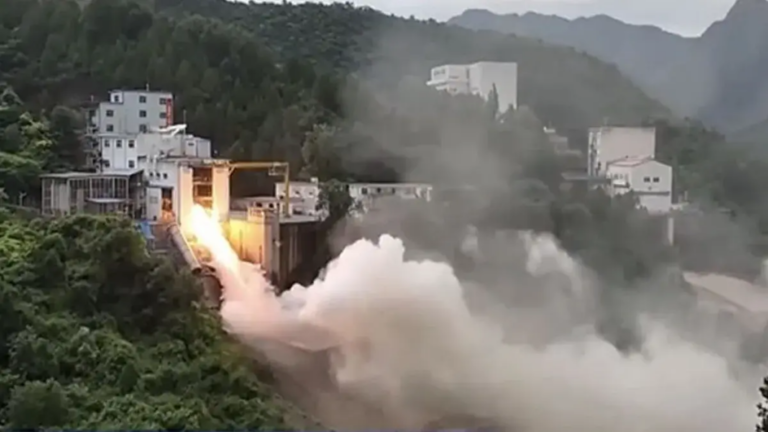
[ad_1]
China has been testing out a new engine designed to power a rocket to take astronauts to the moon.
The kerosene fuel and liquid oxygen rocket engine was fired at a test stand near Xi’an, Shaanxi province, on July 22, meeting key technical requirements for its performance. Footage shows orange flames and exhaust gasses and water vapor blasting from the stand down a ravine.
The new rocket engine will power the new Long March 10 rocket being developed to launch crewed missions to the moon, according to the China Aerospace Science and Technology Corporation (CASC).
The engine, sometimes referred to as the YF-100K, produces around 130 tons of thrust according to CASC. It is an upgraded version of the engine which powers China’s current most powerful rocket, the Long March 5.
Related: China tests reusable rocket engine for the 1st time (video)

“The results of the engine’s test run today have successfully met relevant requirements. The start and shutdown of the engine and its operation smoothness in high- and low-working conditions have been assessed, and the relevant parameters have been obtained,” Zhou Xianqi, a researcher at CASC’s Xi’an Aerospace Propulsion Institute, told CCTV.
The institute plans to conduct several high-altitude simulation tests of the engine later this year as next steps.
The Long March 10 will be around 295 feet (90 meters) tall and have three, 16 feet (5 m) diameter first stage cores. It will have a mass at takeoff of 463,000 pounds (210,000 kilograms). It will be capable of launching 59,500 pounds (27,000 kilograms) into lunar transfer orbit. China plans to hold a test launch of the rocket in 2027.
The development of the new engine and rocket is part of China’s plan to put boots on the moon before 2030.
[ad_2]